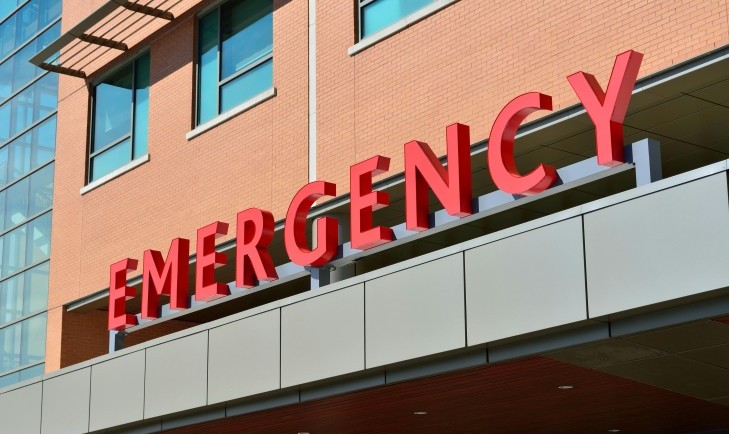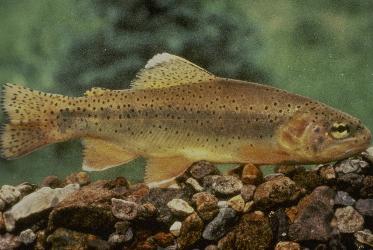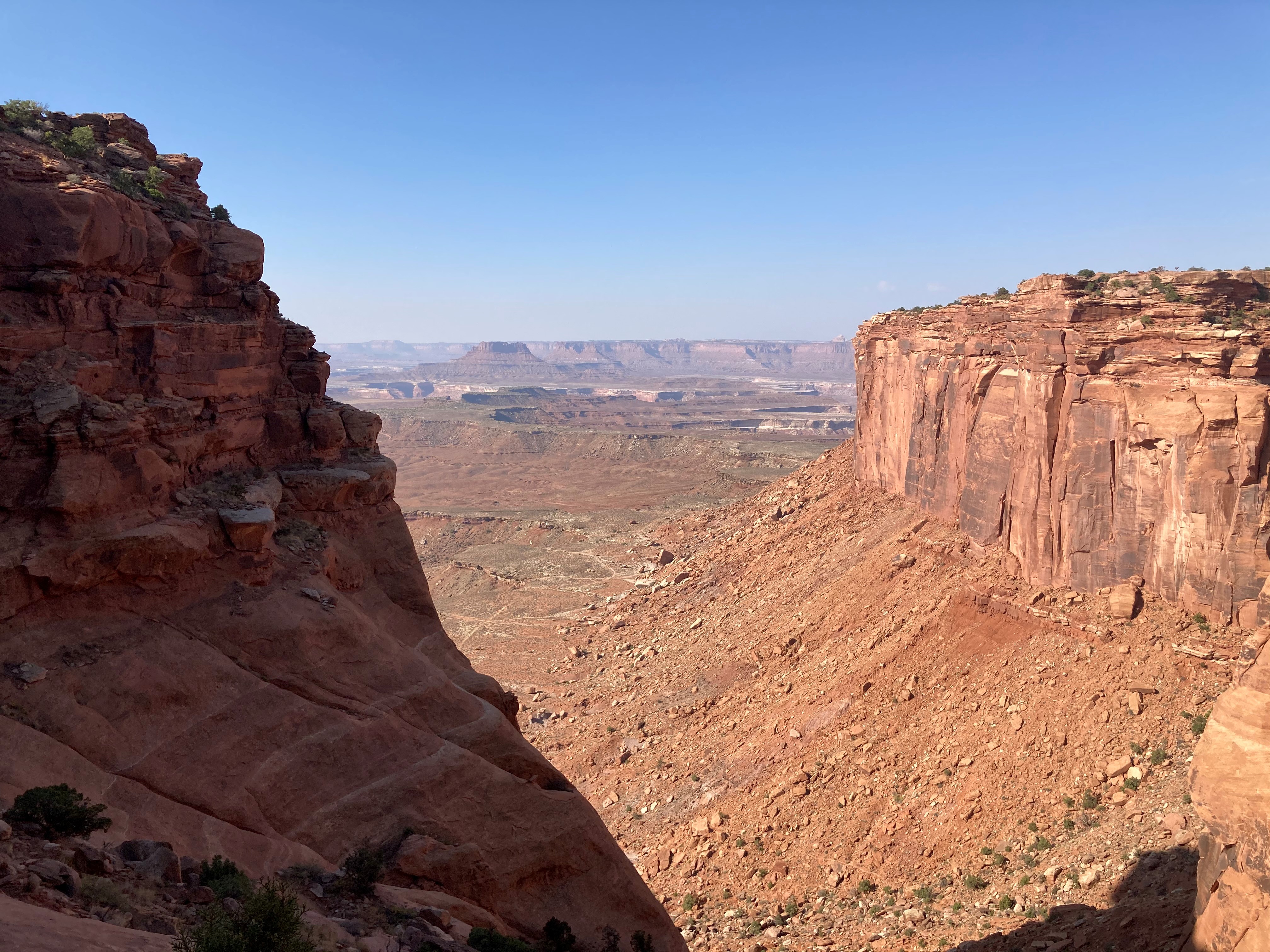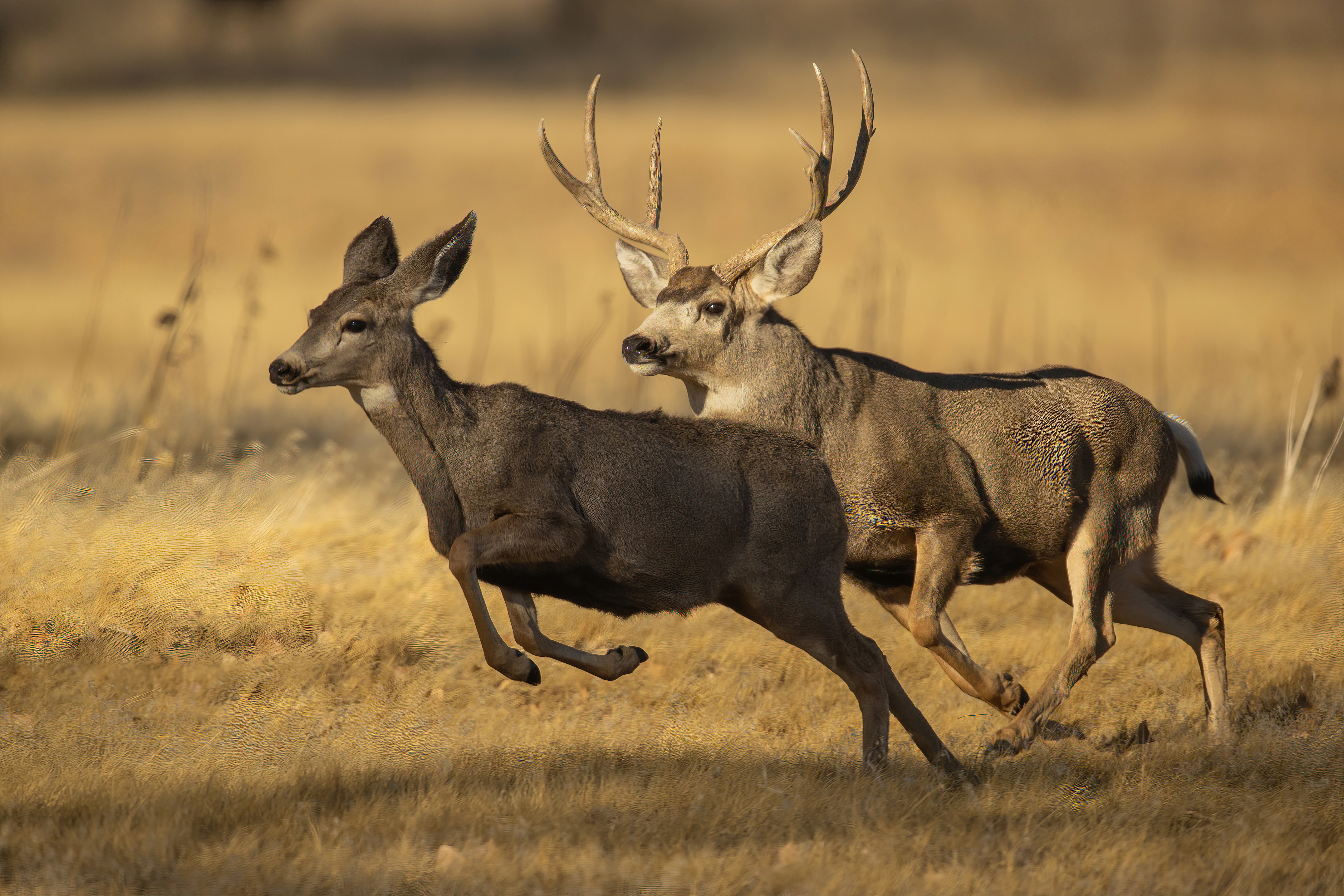09/12/24
Best of the West: Expanding rural health care; Apache trout; carbon capture; 60 years of Canyonlands; mule deer; and building transmission lines

The Western Governors' Association keeps you updated on the latest news in the West. Here are the top stories for the week starting September 9, 2024. (Photos courtesy of Adobe Stock Images, Pixabay, and U.S. Fish and Wildlife Service)
Across the country, rural hospitals are closing and rural Americans are finding it harder to access quality health care. According to the Government Accountability Office, between 2013 and 2020, as many as 100 rural hospitals closed, forcing many patients to drive an average of 20 additional miles for common inpatient services and 40 additional miles for specialty care.
As local hospitals close, many rural patients are looking to telemedicine to fill gaps in their healthcare. However, broadband deployment has failed to reach many rural communities, especially in rugged and remote areas in the West, which further blocks rural residents from receiving the health care they need. In 2019, at least 17% of people living in rural areas lacked access to broadband internet, compared to just 1% of people in urban areas.
As a result of a number of factors, including less reliable access to medical care, the USDA Economic Research Service found that the natural-cause mortality rate for working age people in rural areas was 43% higher than it was in urban areas. The researchers also found that natural-cause mortality rates showed particular increases among females, especially among American Indian and Alaskan Native populations, with the greatest increase coming from western states.
Western Governors have a track record of pushing for more robust and accessible rural health care, especially given the unique challenges presented in the West. Rural communities in the West are often separated by vast swaths of rugged terrain, leaving large gaps between hospitals and making it challenging to bring reliable broadband connection to many communities.
The Governors acknowledge these challenges and more – as well as ways to solve them – in WGA Policy Resolution 2022-07, Physical and Behavioral Healthcare in Western States.
In the resolution, the Governors push for programs to bolster the rural health care workforce, expand rural broadband connectivity, and boost both physical and mental health care access for people in the West, among other policy priorities.
Outside of their collective advocacy through WGA, individual Western Governors are prioritizing rural health care outcomes in their states.
In New Mexico, Governor Michelle Lujan Grisham recently announced $46 million in funding for rural health care providers in the state. The investment will be distributed through the Rural Health Care Delivery Fund, and it will be primarily used to support vital services in underserved areas.
New Mexico’s funding builds off of an $80 million investment made through the Rural Health Care Delivery Fund that is supporting health care access for some of the state’s most rural and underserved areas.
"This $46 million investment demonstrates our dedication to improving health care access in rural areas while providing critical support to health care providers," said Governor Lujan Grisham. "We encourage all eligible providers to take advantage of this opportunity to strengthen the services they offer in their communities."
In Oklahoma, a hospital in rural Tillman County is being reconstructed after being shuttered for the better part of eight years. Since closing in 2016, Tillman County residents have had to drive between 30 minutes and an hour to access hospital level care.
Now, with Memorial Health of Tillman County Critical Access Hospital under construction, the area’s 15,000 residents will soon have access to 5 emergency treatment rooms, 10 inpatient beds, physical therapy, radiology, laboratory and space for additional support services in their community. Experts say that it is rare for closed rural hospitals to reopen today, but the new facility in Tillman County marks a significant lifeline for the community and represents an inspiring model for other rural areas.
As the state with the lowest population density in the continental U.S., Wyoming has faced significant hurdles in providing health care to its dispersed population.
One particular challenge in Wyoming has been in providing emergency and ambulance services to rural communities. Governor Mark Gordon has initiated solutions to support EMS services in the state, including focusing his Health Task Force on solutions to stabilize emergency services.
Through the Task Force, Governor Gordon has directed millions of dollars to help support the EMS system, and helped explore options to regionalize emergency services to allow rural hospitals to join forces to tackle the strain on their respective EMS systems.
Elsewhere in the West, Governors are prioritizing rural physical and behavioral health and making strides to bring that care to communities that are far from large hospital systems.
Apache trout delisted: Arizona’s state fish, the Apache trout, has been removed from the endangered species list after decades of recovery efforts. Governor Katie Hobbs was joined in Mesa, Arizona, by Secretary of the Interior Deb Haaland for the announcement.
The Apache trout is only found in streams in the White Mountains of eastern Arizona, and it’s one of just two native trout species in the state. It was originally protected under the Endangered Species Act in 1973 and moved to the threatened list in 1975.
Its successful recovery marks the first trout and the first sportfish to be removed from the endangered species list.
North Dakota carbon capture investment: Blue Flint Ethanol, a plant in North Dakota that utilizes carbon capture and sequestration (CCS) technology, is set to receive $205 million from Bank of America.
The plant, which produces ethanol, began capturing carbon emissions last October, and has already captured 125,000 metric tons of CO2. Going forward, the facility plans to capture more than 200,000 tons of CO2 per year.
Bank of America’s $205 million commitment in the operation allows it to participate in 45Q tax credits generated from the plant’s carbon capture and sequestration infrastructure. In the future, Bank of America will also be able to purchase clean fuel tax credits generated by the facility.
60 years of Canyonlands National Park: September 12 marked the sixtieth anniversary of Canyonlands National Park in southern Utah. The 337,000-acre park, distinguished by deep canyons, rugged terrain, and soaring red rock towers, is the largest National Park in Utah.
is the largest National Park in Utah.
Originally designated in 1964 by President Lyndon B. Johnson, the park preserves archeological and geological history, as well as diverse plant and animal habitats.
Read a recent letter from Western Governors to Congressional leaders urging support for areas like Canyonlands amid increased visitation and recreation at popular outdoor recreation sites across the West.
Mapping Western mule deer migration: the Convention on the Conservation of Migratory Species of Wild Animals, a United Nations initiative, recently launched a global migration atlas with help from US Geological Survey (USGS) research on mule deer migration.
The interactive online global map, known as the Atlas of Ungulate Migration, tracks the migration paths of large hoofed mammals, known as ungulates, around the world. Such animals include antelopes, guanacos, zebras, and mule deer, which regularly migrate long distances at different points in the year.
Ungulate Migration, tracks the migration paths of large hoofed mammals, known as ungulates, around the world. Such animals include antelopes, guanacos, zebras, and mule deer, which regularly migrate long distances at different points in the year.
The project includes work from the USGS that has tracked nearly 200 migration routes for mule deer herds in the West since 2018. The global map will help conservation efforts and prevent new developments from impacting ungulate migration paths.
Transmission lines: the Greenlink West transmission line, which is set to run between Las Vegas and Reno, Nevada, recently received federal approval from the Department of the Interior.
The project will have the ability to transmit as much as 4,000 megawatts of clean energy over a 350-mile stretch, which is about the amount of energy needed to power 4.8 million homes.
The Department of the Interior also advanced the Libra Solar Project in Nevada, which would be able to generate and store as much as 700 megawatts of energy. Once completed, Libra will be the largest solar-plus battery storage project in the state and one of the largest in the country.
Read Western Governors’ policy resolution on infrastructure permitting to learn more about the Governors’ shared policy on permitting for energy projects and others.